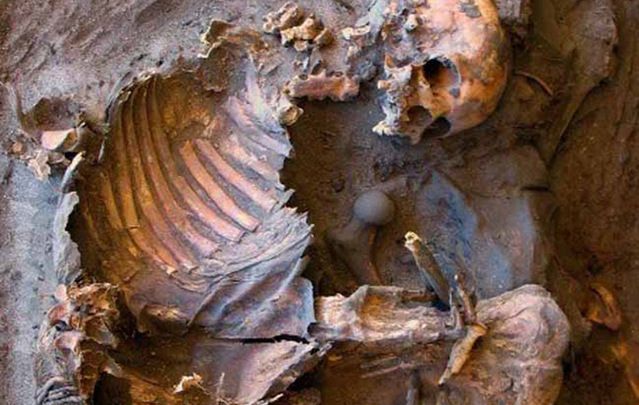Archaeologists found the 5,500-year-old bones of a Stone Age child and adult in a cave situated on Knocknarea mountain not far from the town of Sligo. Researchers at IT Sligo discovered 13 small bones and bone fragments in the cave in March 2014. The find provided new evidence of Knocknarea’s Neolithic links and the prehistoric practice known as “excoriation,” according to the Irish Mirror.
Three of the bones belonged to the child, aged 4 to 6 years, and ten belonged to an adult of unknown gender, aged 30 to 39 years. The discovery included foot bones and fragments of a skull.
“It’s an enormously exciting discovery,” said Dr. Marion Dowd of IT Sligo, Ireland’s only specialist in the archaeology of Irish caves.
“This might seem like a small quantity but it has yielded fantastic results."
IT Sligo archaeology graduate Thorsten Kahlert discovered the bones by chance while he was investigating several little-known caves on the slopes of the mountain.
“I was surveying one small cave when something on the cave floor caught my eye,” said Kahlert.
“I took a closer look and realized it was a human foot bone.” He discovered more bones strewn on the cave floor after further examination.
The remains were taken to Dr. Catriona McKenzie of Queen’s University Belfast, an archaeologist specializing in the analysis of human bones. Dr. Down contacted the National Monuments Service, which funded a rescue excavation by the two IT Sligo researchers. The researchers had to endure rough weather and conditions to retrieve the bones.
“You have to squeeze through, head first, lying on your stomach, and after a while, you get into a larger passage,” said Thorsten.
"It is an entirely natural cave but you have to crouch down.
"For the most part, it is not possible to stand upright”.
Dr. Down said the small number of bones and their size suggest the cave was used as an excoriation site. A corpse is laid in the cave and after decomposition, the bones are transferred elsewhere. Fragments could be accidentally left behind.
"Significantly, too, it seems the adult had been placed there about 300 years before the child, who died about 5,200 years ago,” said Dowd.
“When people died in prehistory, their corpses were sometimes laid out in caves. After one or two years, when the flesh and soft tissue had decomposed, the dry bones were collected and removed to another location,” she said.
“We can imagine, therefore, that Stone Age people in Sligo between 5,000 and 5,500 years ago carried the corpses of their dead up the mountain. After an arduous climb, they then squeezed through the narrow cave entrance and laid the dead person on the cave floor.
“Sometime later, maybe after one or two years, people returned to the cave and collected the bones and took them to another location. Where they took them, we don’t know. But the monuments on the summit of Knocknarea are one likely possibility. All that was left behind in the cave were some small bones that had been overlooked”.
She said that Sligo-Leitrim is one of the country’s most important cave regions but has not been extensively investigated archaeologically.
Love Irish History? "Like" IrishCentral History Facebook page now and you'll never miss an update again!
* Originally published in March 2014.




Comments